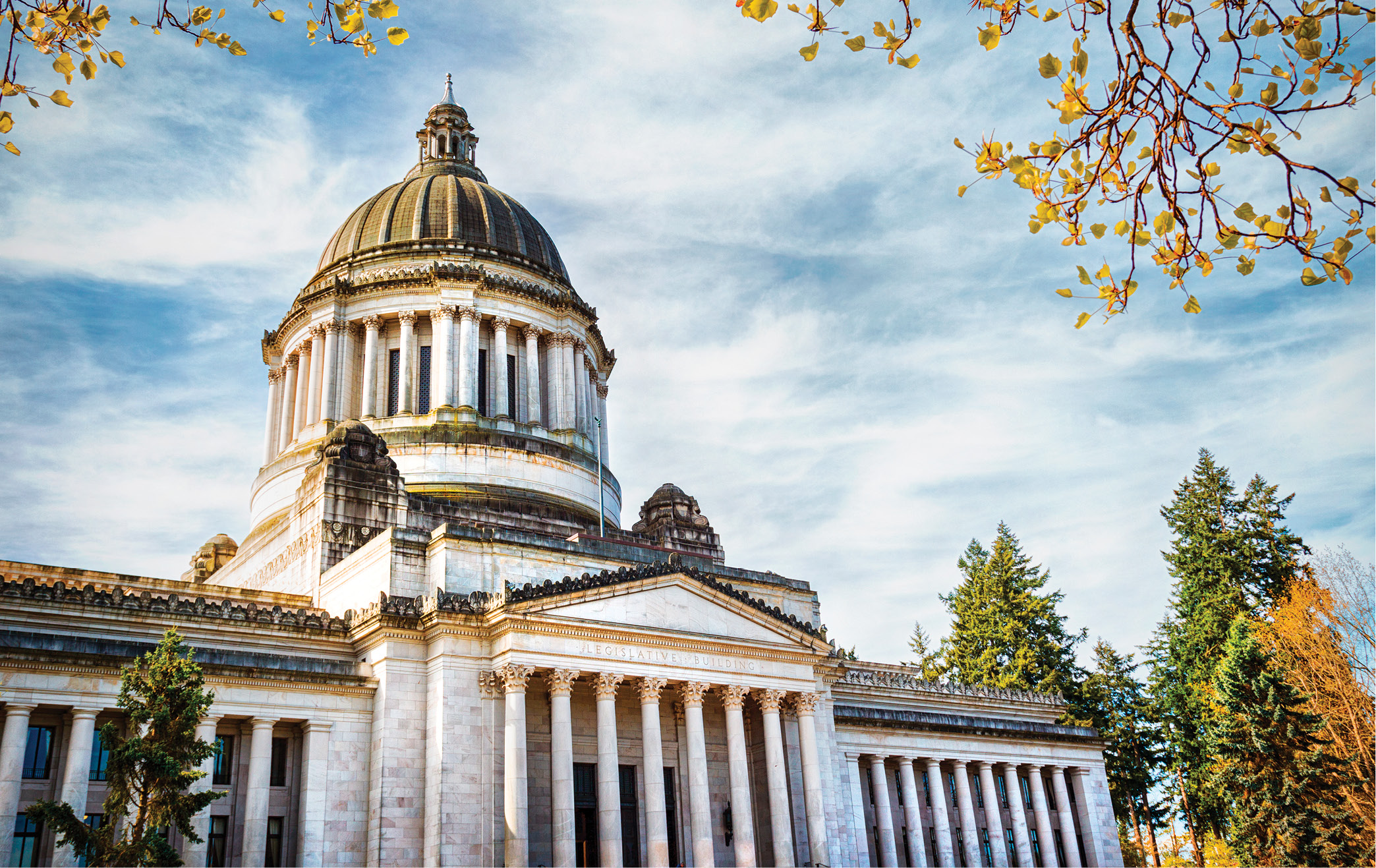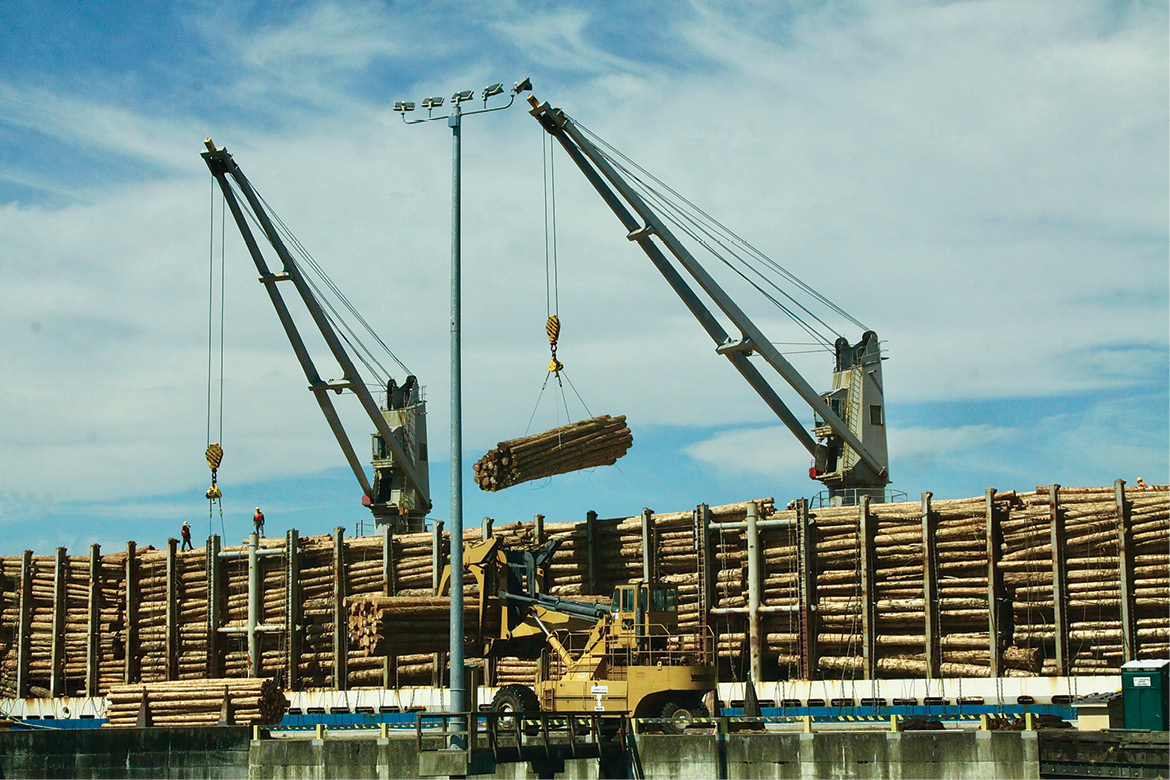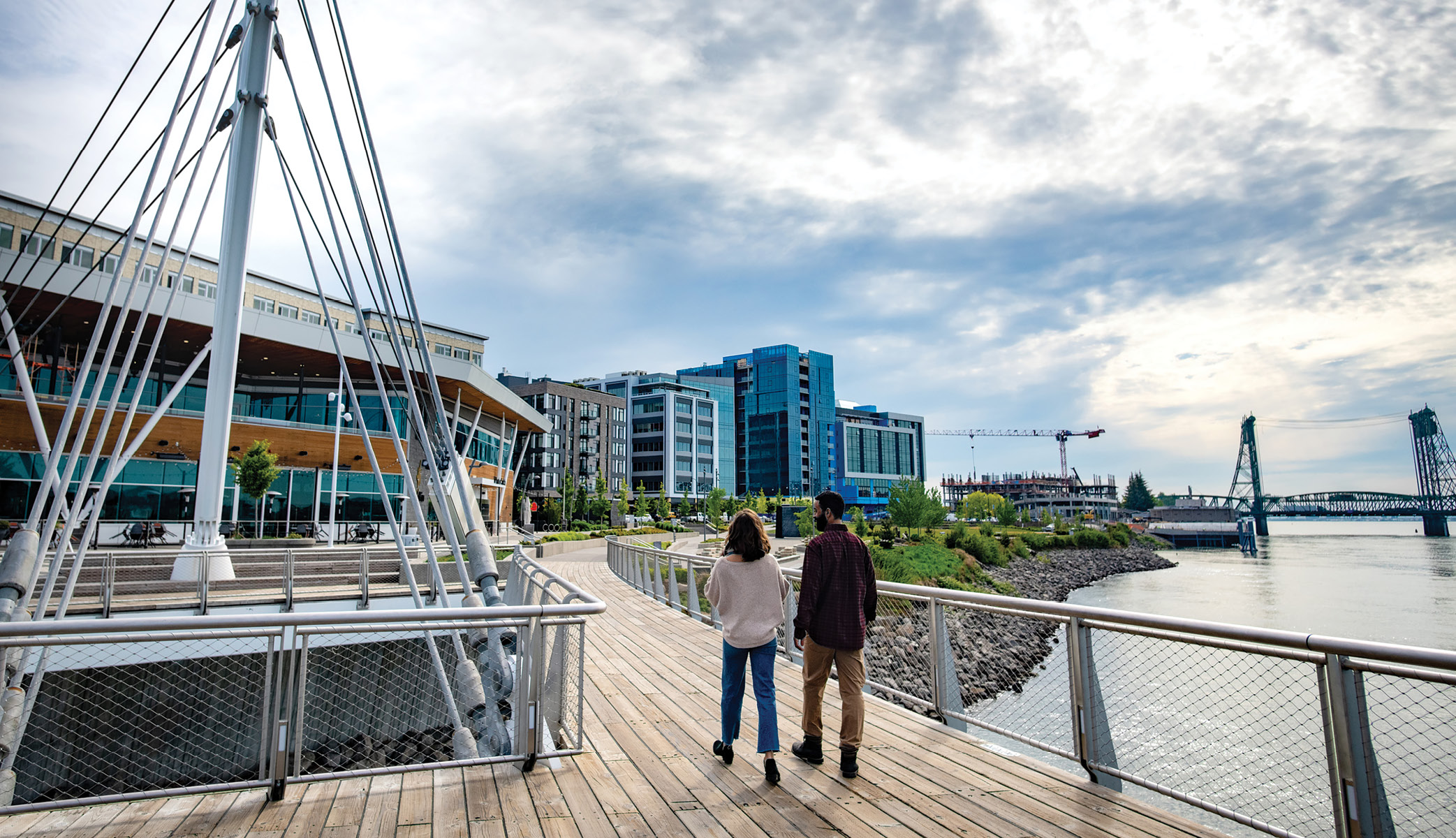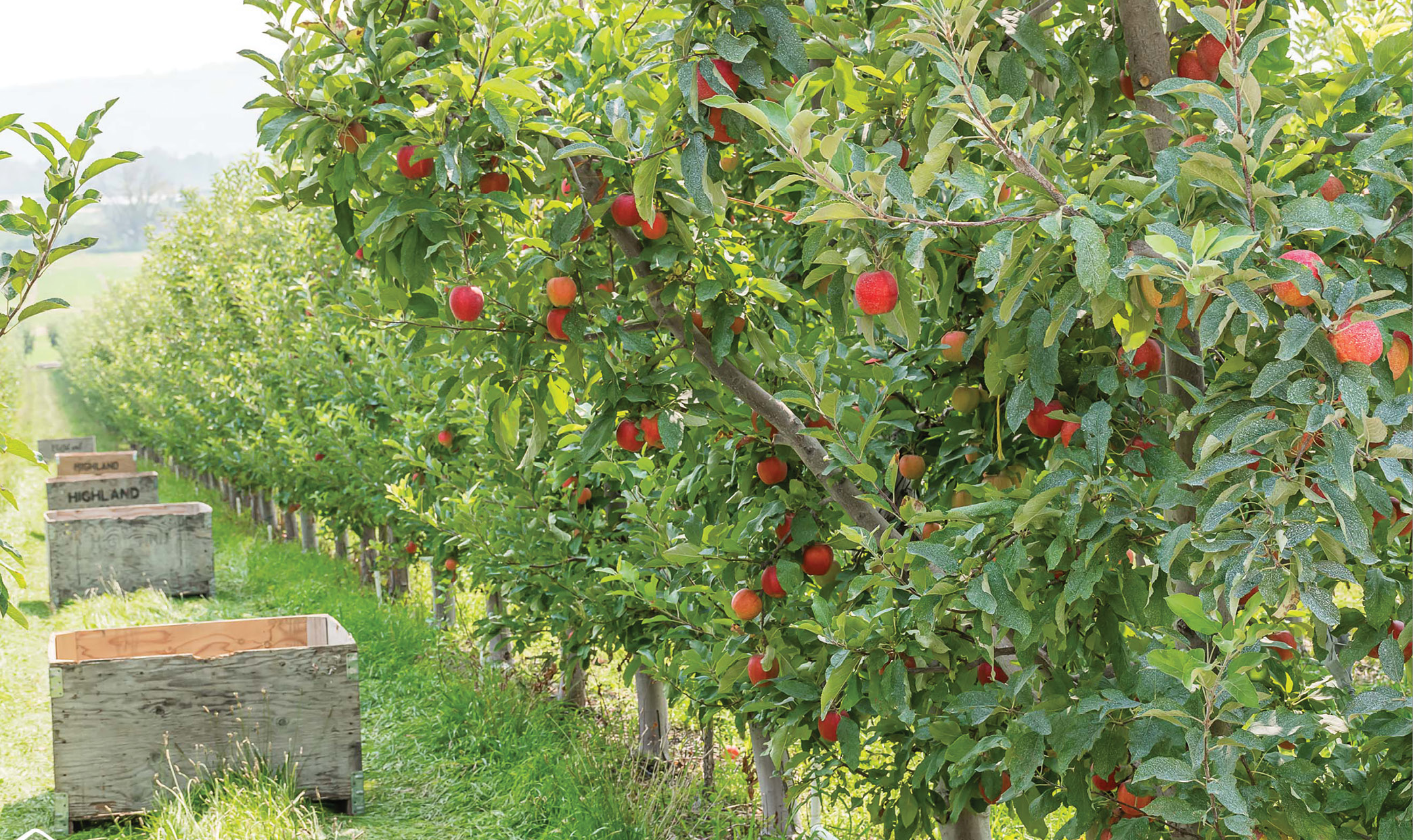From the fertile farms of Yakima Valley to the tech hubs in Seattle, each region in Washington contributes uniquely to the state’s growing economy.
Backlit by breathtaking natural beauty, including snow-capped mountains, miles of shoreline and lush forests, Washington’s landscape is as economically promising as it is diverse. The state’s vast array of rural and urban communities, each known for their unique character and legacy as industry leaders, all play a fundamental role in upholding the state’s flourishing economy.
Join us as we take a walk-through Washington, exploring each region’s economic impact and uncovering exciting new projects.

Washington State Capitol Building in Olympia
Photo: Getty Images
Western
The largest speculative industrial property project in the Pacific Northwest has taken root in western Washington. Around an hour south of Olympia, the state capital, Trammell Crow Co. and Diamond Realty Investments have embarked on a joint venture to build a 1.2-million-sq.-ft. industrial project on an 82-acre site in Kelso. Cowlitz County public records show that the project has received $86.1 million in construction financing. The partnership broke ground in August 2023 and plans to construct a single-story facility that includes 40-foot clear heights, 219 dock door positions, 351 trailer parking spots and 514 vehicle parking spots. While the project is expected to be completed in late 2024, an adjacent property opens up potential for additional expansion opportunities.
This project comes a year after CRG completed construction on Costco’s’ 1.1 million-sq.-ft. distribution center in Tumwater. When the project was announced in 2021, REBusinessOnline reported that the “$160 million build-to-suit project will feature 175 car parking spaces, 418 trailer spaces and 129 dock doors.”
Tumwater’s home county, Thurston County, has long been a major hub for distribution. Companies such as Whole Foods, Trader Joe’s and Target all operate distribution facilities there. This notoriety also encompasses Thurston’s neighboring county, Grays Harbor. A hallmark of the county, the Port of Grays Harbor, has recently moved forward in the planning of its Terminal 4 Expansion and Redevelopment Project. The $46 million undertaking is set be the Port’s “biggest project” and add miles of rail, update infrastructure on the pier and redevelop a former pontoon casting basin into a cargo yard. For this project, the Port has partnered with Ag Processing Inc. (AGP), an Omaha-based agricultural company who is the port’s biggest marine terminal customer.
Puget Sound
Home to iconic powerhouses Microsoft and Amazon, as well as an ever-expanding ecosystem of cutting-edge startups and companies, Seattle stands out as a trailblazer for innovation in the modern era. This impressive reputation extends beyond the city limits, spreading throughout the Puget Sound, where numerous communities are teeming with burgeoning tech, biotech and clean technology sectors, creating hundreds of high paying jobs and boosting the state’s economy.
According to CBRE, tech-related jobs represent 9.9% of overall employment across the Puget Sound region — nearly double the 50-market average of 5.6%. The organization has also consistently ranked Seattle No. 2 for tech talent employment.
“Top talent can choose where they live and work. They have been moving to this region for years due to a perfect mix of jobs, housing, outdoors, community and diversity. Growth follows talent, and I think we are just getting started,” said Bill Cooper, senior vice president with CBRE’s Tech & Media Practice in Bellevue, in 2022. “It’s not just traditional tech driving the job growth. We are seeing a lot of activity from biotech and gaming — sectors equally reliant on tech talent for success.”
The region’s innovative spirit, coupled with its longstanding commitment to sustainability, has marked it as an attractive destination for emerging industries, including the electric vehicle (EV) market.
Tesla has already leased one of the first buildings developed at a new industrial park in Marysville, which will be the company’s first plant in the Pacific Northwest. Located less than 35 miles north of Seattle, the Cascade Business Park is still under construction, but upon the project’s completion is expected to include nine facilities totaling 5.1 million sq. ft. Tesla’s 245,000-sq.-ft.-plus building is the first structure completed at the site and will be used as a parts and assembly plant.
Northwest
Located along the Strait of Juan de Fuca and in close proximity to the Canadian border, Port Angeles provides essential links to domestic and international markets. As a key player in regional and international trade, the city’s robust maritime industry caters to a wide range of cargo needs and is well known as a global hub for the movement of forest products. The Port’s Intermodal Handling and Transfer Facility (IHTF) is the only industrial facility on the North Olympic Peninsula with a water interface that can process whole logs coming from Canada and Alaska. It also moves logs from the Peninsula to manufacturers across the Pacific Northwest. This asset is vital to the state’s economy, directly supporting domestic manufacturing, timber and maritime industry employment and economic development.

Logs being uploaded for transport at the Port of Port Angeles.
Photo: Getty Images

Downtown Seattle
Photo: Getty Images
In order to keep this critical resource in working order, the U.S. Department of Transportation’s Maritime Administration awarded the Port of Port Angeles an $8.6 million federal grant from the Port Infrastructure Development Program (PIDP). This funding will be used to improve infrastructure and increase efficiency.
“The Port of Port Angeles is the anchor of the economy in the Olympic Peninsula and connects Washington state to the rest of the world, sending our goods to market and employing thousands of workers in Clallam County. With so much at stake for Washington families, it’s critical we make the Port, which plays such a central role in our state’s economy, safer and more efficient, and these funds I helped pass will do just that,” said Senator Patty Murray in a press release.
Northern
Whether by land, sky or sea, the Port of Bellingham will take you and your products where they need to go. With assets that include Fairhaven Station, Blaine Harbor, Squalicum Harbor, Bellingham Shipping Terminal and Bellingham International Airport, whose annual impact alone is estimated at $471.5 million, Whatcom County is a certifiable hub for trade and transportation.
The Port owns approximately 1,690 acres of land with 1.4 million sq. ft. of office, commercial and industrial building space. According to the Port of Bellingham’s 2022 Budget Highlights and Strategic Priorities report, there are currently 250 industrial and commercial Port tenants, providing thousands of local jobs including more than 6,000 in Maritime Trade.
Norway’s Corvus Energy, a leading supplier of battery energy storage systems (BESS) for marine applications, is one of the latest companies to join the Port’s growing list of tenants. The company’s new factory, which will be its first manufacturing facility in the U.S., will boast an annual capacity of 200 MWh of stored energy capacity, with plans to support the United States’ growing demand for marine battery energy storage solutions.
“Washington state was a natural choice for Corvus due to the presence of a strong maritime cluster, the state’s focus on green shipping, and the proximity to our large team near Vancouver, Canada,” explained Geir Bjørkeli, CEO of Corvus Energy, in a press release. “We know that a U.S. presence and close collaboration with shipyards, shipowners, Washington Maritime Blue and other suppliers and service providers foster innovation across the entire industry and build valuable competence. This will work as an accelerator to create local, green jobs.”
In support of this project, the Washington State Department of Commerce awarded the Port a $250,000 strategic reserve fund (SRF) grant, which has been used to upgrade the building to suit Corvus’ needs.

Blaine Harbor
Photo Courtesy of Port of Bellingham
Southwest
Situated on the banks of the Columbia River, the city of Vancouver is home to a booming business climate. This southwestern city not only offers the benefits of doing business in Washington but is also located in close proximity to Portland, Oregon. The successes of both cities seem to seep into one another, creating an abundance of opportunities in tech, financial services, healthcare and manufacturing on either side of the state line.
According to Portland Real Estate, the job market in Vancouver has been growing at a rate of 1% over the last few years and is expected to accelerate to 39% over the next decade, which is 5% higher than the projected national average. This assessment, paired with the recent expansion projects announced in the city, solidifies Vancouver’s standing as an increasingly desirable place to do business.
In August 2022, SEH America Inc., announced the expansion of its silicon wafer manufacturing operations in the city. The proposed plans, dubbed Super X, will include a 300,000-sq.-ft., automated crystal wafer manufacturing facility on SEH America’s Vancouver campus.
American multinational information technology company HP Inc. revealed that it will be opening a new research facility in Vancouver in 2026. The company filed updated plans with the city in fall 2022 which outlined 160,000 sq. ft. of office space and another 75,000 sq. ft. for research in two buildings about a mile north of HP’s current location in Vancouver.
South Central
In the heart of Washington, the Tri-Cities of Kennewick, Pasco and Richland are emerging as one of the fastest-growing metros in the nation. With a dynamic mix of thriving sectors, including technology, agriculture, healthcare and renewable energy, the Tri-Cities have become a magnet for businesses seeking to capitalize on the area’s strategic location and skilled workers.
As a result, the region has not only witnessed a rise in expansion projects but is also attracting a steady stream of new talent. Since the 2020 Census, the metro’s population has grown by nearly 13,000, a 4.3% increase. Alongside the rise in residents, the region is experiencing a historically low unemployment rate. As of September 2023, the Tri-Cities Area Journal of Business reported that unemployment totaled 3.6%, well under the metro’s typical range of 5 to 6%. This achievement is a direct result of the ongoing influx in job opportunities brought in by expanding companies.
Darigold, a producer of dairy-based products, plans to introduce 1,200 new jobs once its new protein and butter factory in Pasco becomes operational. The $500 million processing plant is expected to be completed in early 2024 and boast enough capacity to produce around 175 million pounds of butter and nearly 280 million pounds of powdered milk products per year.
Following the multimillion-dollar expansion of its plant in north Richland, ATI Inc., an American manufacturer of specialty materials, plans to almost double its current workforce. As recipients of a Targeted Urban Area (TUA) tax exemption, ATI will add 93 jobs as well as three new buildings to grow its titanium melting operations. The expansion will increase ATI’s production of aerospace and defense-grade titanium by approximately 35% over the 2022 baseline levels.
North Central
Blessed with an elevated landscape, narrow river valleys and around 300 annual days of sun, North Central Washington boasts the perfect environment for agriculture. The orchards and farms sprinkled throughout Douglas, Grant, Chelan and Okanogan County greatly contribute to Washington’s success within this industry. Year after year, the state continues to be recognized as the nation’s top producer of apples, blueberries, hops, pears and sweet cherries.
Grant County alone boasts more than 1,850 farms, annually producing $1.19 billion in crops and livestock. Many of the crops grown in Grant County are processed there as well, creating a $364 million food processing industry that employs around 2,100 people. According to the Grant County Economic Development Council, “Grant County has thousands of acres of industrial zoned land that is ready for development,” with 1,700,000 acres of farmland in production and 470,000 acres irrigated to produce high-value commodities like potatoes, carrots, peas, beans, apples, cherries, wine grapes, peaches and more.

Vancouver, Washington
Photo Courtesy of State of Washington Tourism, Jason Hummel Photography
Alongside traditional farming and food processing companies, new agtech innovators are also expanding in the region. In July 2022, Beta Hatch, a company that sustainably produces protein for animal feed in a zero-waste model, opened the largest mealworm hatchery in North America. The company’s Cashmere flagship uses insect-rearing technology to convert organic waste into high-value proteins, oils and nutrients for the poultry and aquaculture industries.
Beta Hatch’s new 50,000-sq.-ft. facility is set to be used for more than just production — the flagship is also an R&D lab. To support this effort, the Washington Department of Commerce awarded Beta Hatch $200,000 through the Evergreen Manufacturing Grant program. This funding will be used for research, development and pilot projects that will help expand the company’s controlled environment agriculture and manufacturing of insect-derived products.
Eastern
Spokane’s bioscience sector is bigger and better than ever. Since setting the Vision 2030 plan into action in 2015, Greater Spokane Incorporated (GSI) has been diligently working to scale the metro’s life sciences industry. Describe as the “single largest economic development opportunity for our region,” this project aims to expand eastern Washington’s resources for bioscience research, commercialization, business development and education, thus growing the industry’s annual economic impact to $1.7 billion by 2030 and inciting the creation of more than 9,000 jobs.
Now, nearly 10 years after this plan was first set in motion, Spokane and the surrounding area are already reaping the rewards. The metro has celebrated many projects ranging from corporate expansion to the creation of incubators. Some of the region’s recent highlights include the $92 million expansion of pharmaceutical manufacturing and packaging company Jubilant HollisterStier’s plant in east Spokane. The company plans to add 50,000 sq. ft. to the location and expects construction to be completed by the end of 2023.

The North Central city of Wenatchee is known as the “Apple Capital of the World.”
Photo courtesy of Washington State Department of Agriculture
The city is also set to be the home of Evergreen Bioscience Innovation Cluster’s future headquarters. In July, the organization selected a site in Spokane’s University District. With this project, Evergreen Bioscience aims to create a “balance of leasable space to common area to ensure the economic viability of the building.” The initial rendering for the 77,000-sq.-ft. building has an estimated construction value of $40 million.
In April, Evergreen Bioscience was awarded $200,000 through the Washington state Department of Commerce Evergreen Manufacturing Growth Grant program. According to the Spokane Journal, the funds were used to develop preliminary designs for the Evergreen Bioscience Innovation Building, which is expected to be the home to contract bioscience research and development and manufacturing companies with the capacity to accommodate up to 500 workers.

